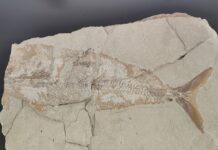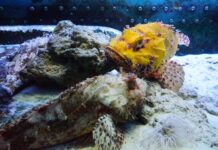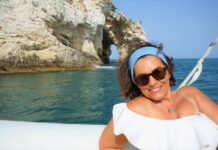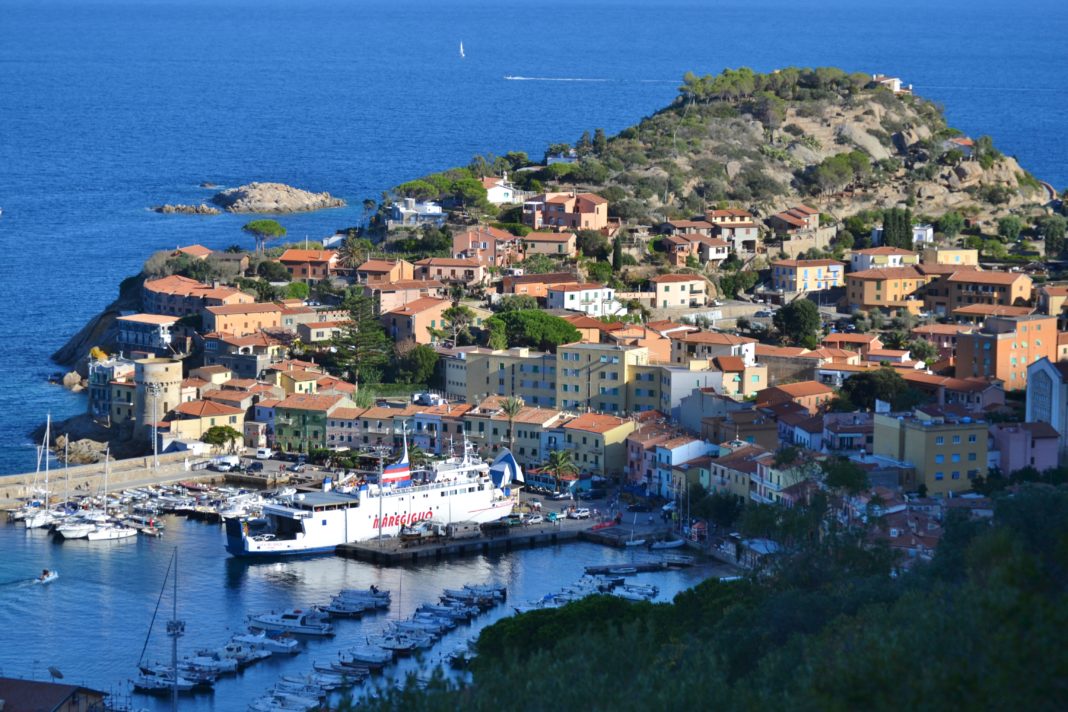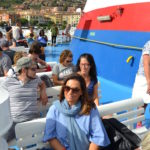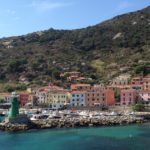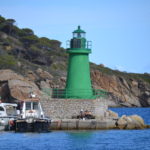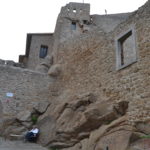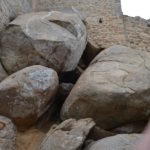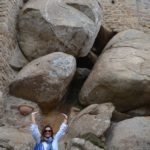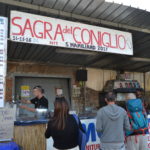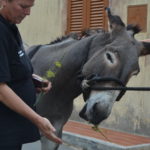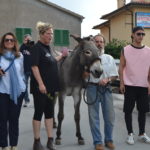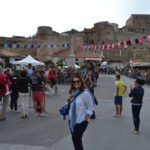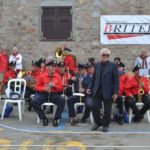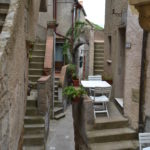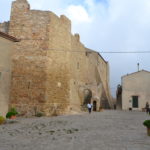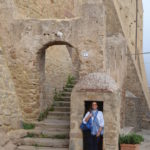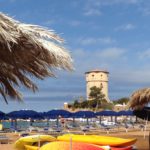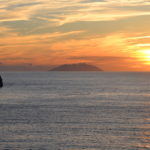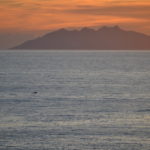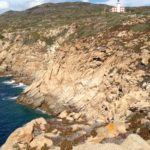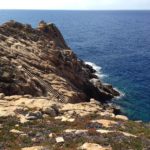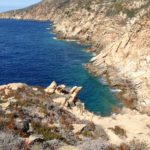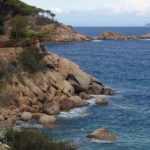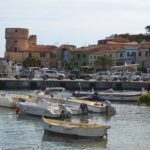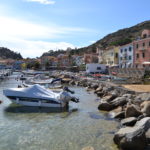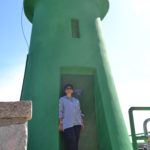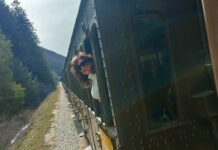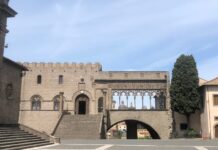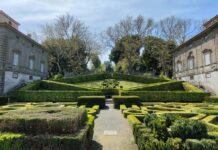Giglio island has been defined as a postcard that “stamps the memory and makes it a collection” by Oreste Del Buono, a journalist and writer in Tuscany, precisely native of the island of Elba that of Giglio is the older sister, belonging both at the Tuscan Archipelago.
Giglio emerges from the deep blue of the Tyrrhenian Sea

The first thing that surprises by the island, approaching the colored mosaic of houses and boats of Giglio Porto are the smooth, granite boulders that have brought us back to memory in Gallura in Sardinia.
Giglio island, in fact, is an irregular rock cone that changes from gray to pink emerging from the deep blue of the sea separating it from the Argentario. In the 25 km of coastline you will find beautiful creeks, caves, cliffs and sandy beaches.

This is our list of five experiences not to be missed on the island.
1. Bathroom in the coves of the Arenella and the Cannelle
The Arenella cove is located on the east coast of the island, the same on which overlooks Giglio Porto, the main port where ferries arrive from Porto Santo Stefano.
The bay is characterized by Mediterranean scrub, rocks, white sand and a transparent sea we chose for our first bath in the fresh and inviting mid-September.
On the cove you will find the Arenella Hotel and a kiosk where you can enjoy a tasty crunchy snack or a plate cooked at the time of tasty spaghetti to the tooth with anchovies, capers and cherry tomatoes.
 Another unmissable bath is that in the clear waters and the wonderful turquoise shades of the Cannelle Beach, considered reasonably the most beautiful on the island and characterized by a sea of rare transparency.
Another unmissable bath is that in the clear waters and the wonderful turquoise shades of the Cannelle Beach, considered reasonably the most beautiful on the island and characterized by a sea of rare transparency.

2. Visit to Giglio Castello

The second of the experiences not to be missed on the island is the visit to Giglio Castello, in its narrow and winding streets, shaded by the dense texture of stone houses enclosed under the 14th century Pisa fortress restored in 1600 by the architect Alessandro Pieroni on commission by Grand Duke Ferdinand I de ‘Medici.

Also to visit is the Romanesque church, rebuilt in Baroque style in the 18th century, dedicated to the Apostles Peter and Paul. The Reliquary Arm is guarded in the St. Mamilian ulna, patron saint of the island.
 And we were fortunate enough to be at Giglio just on September 15, the day when the Saint is celebrating with a solemn procession and the Palio Rionale degli Asini, where the 4 districts of the village challenge themselves in Piazza Gloriosa on donkey and who he makes the first three rounds he wins.
And we were fortunate enough to be at Giglio just on September 15, the day when the Saint is celebrating with a solemn procession and the Palio Rionale degli Asini, where the 4 districts of the village challenge themselves in Piazza Gloriosa on donkey and who he makes the first three rounds he wins.
This year the singular race was won by the Casamatta Rion, which despite the donkey not being very convinced of being led on the circuit, first cut the finish line by beating the other three who lost a bit on the road.

After watching the unreleased race you can go for dinner: there are so many locals in the fortified citadel where you can taste the local specialties halfway between the land of Maremma and the island’s sea.

We chose Il Grembo (Via Verdi 7, Giglio Castello – Tel. +39 370 1231640), intimate and gracefully housed three thick walls of an old cellar, and we enjoyed the delicious little crab cows, an absolute news for us. A dish that is first and second since the robust carapace of the big crustacean hides a delicious soft and succulent meat.

Fulls returned to our little manor house that welcomed our Sognidoro, Hotel Castello Monticello (Strada Provinciale, loc. Monticello, Giglio Island – Tel. +39 0564 809252 – info@hotelcastellomonticello.com) where we have been guests of the friendly and sympathetic Tommaso Rum: we talk about it more widely in the dedicated post.
3. Giglio Campese tour

Campese is the largest beach on the island that takes its name from the tower around which in 1799 the inhabitants organized their victorious resistance to the attack of the Tunisian pirates. The crescent-shaped creek with the white sandy beach is enclosed by a a tall faraglione that to the sunset it is dyed of red.
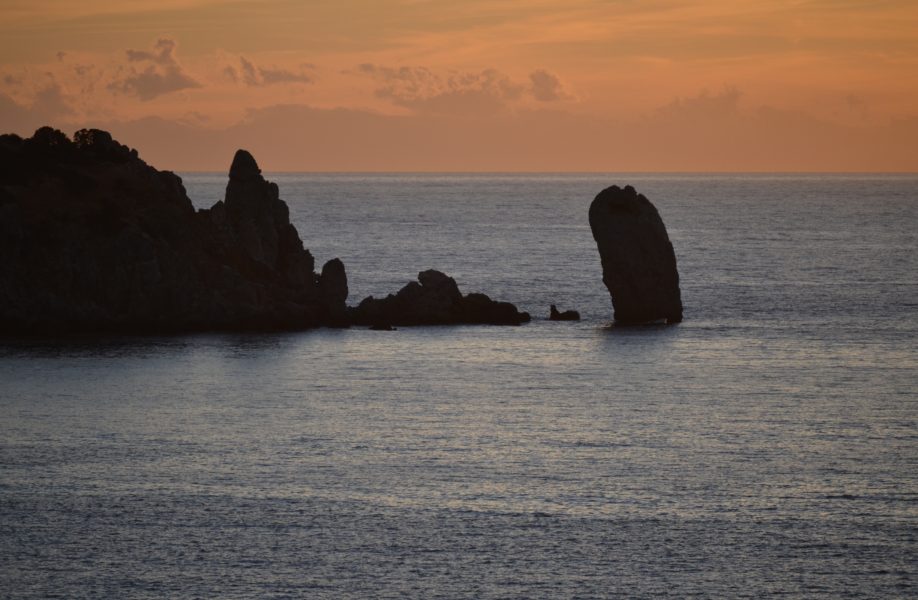
4. Capel Rosso trekking

From the oak to the orange up to a flurry of vermilion, the colors of the rocky cliff of the tip of Capel Rosso, the southernmost island. Getting down to the sea and especially climbing up the steep path is a bit tiring but worth it because the panorama that you face in front of your eyes with Giannutri and Argentario in the background is really wonderful!

They are abducted by the shapes of the rocks that emerge from the dense vegetation, among which stand out small vineyards scattered on the terraced slopes, from which the famous Giglio Island wine is made, the Ansonaco, cultivated in tiny peaks on the sea from the very earliest times ancients.
 There are also small stone buildings that at first sight look like houses for Lillipuziani and are instead palties built between 1500 and 1700 for the grapes crushing. Inside there are one or more tanks often carved directly into the granite benches.
There are also small stone buildings that at first sight look like houses for Lillipuziani and are instead palties built between 1500 and 1700 for the grapes crushing. Inside there are one or more tanks often carved directly into the granite benches.

The walk lasts for about forty minutes and halfway through the trail you can see the lighthouse that was filmed in the movie “The Great Beauty” by Paolo Sorrentino.
5. Giglio Porto walk

As soon as you have landed or before you take the ferry you must go for a walk on the dock of Giglio Porto between colorful houses and small shops. On the right side to the rocks called Le Scole there is a platform surmounted by a large crane that welcomes ferries arriving from Porto Santo Stefano reminding everyone of the tragedy of the Costa Crociere ship. It is the floating barge that is removing all the debris from the area where the Concordia ship was sunk before recovering, which sank here on January 13, 2012, when a rock fired 70 meters on its left flank, causing it to fall.

 It’s great to browse through the shops that look out onto the harbor alternating with the restaurants that propose local fish. As a souvenir of the island we have taken off a fish-shaped ceramic that shows beautifully on my desk, bringing my thoughts to this beautiful holiday even in the most gloomy days, and the panficato, traditional sweet reminds the Sienese panforte, born in 1544 when the pirate Cair Heddin said the Barbarossa sacked and deported 700 Giglio residents who Medici repopulated with the Sienese. For dinner we stopped at the Vecchia Pergola (Via Thaon de Revel, 30 – +39 0564 809080) a small family-run restaurant overlooking the harbor, where we enjoyed delicious and exquisite local fish. For the after-dinner we suggest a ride through the narrow streets leading to a small bay gathered between the houses built on the rocks behind the Saracen Tower.
It’s great to browse through the shops that look out onto the harbor alternating with the restaurants that propose local fish. As a souvenir of the island we have taken off a fish-shaped ceramic that shows beautifully on my desk, bringing my thoughts to this beautiful holiday even in the most gloomy days, and the panficato, traditional sweet reminds the Sienese panforte, born in 1544 when the pirate Cair Heddin said the Barbarossa sacked and deported 700 Giglio residents who Medici repopulated with the Sienese. For dinner we stopped at the Vecchia Pergola (Via Thaon de Revel, 30 – +39 0564 809080) a small family-run restaurant overlooking the harbor, where we enjoyed delicious and exquisite local fish. For the after-dinner we suggest a ride through the narrow streets leading to a small bay gathered between the houses built on the rocks behind the Saracen Tower.
Let yourself be guided by the noise of the waves crashing on the rocks and you will be immersed in a timeless place with the sparkling lights that glisten in the water and suddenly overlook the sea that peeps between the stone houses leaning against each other and built on the remains of the ancient Roman ponds still visible over the water.



